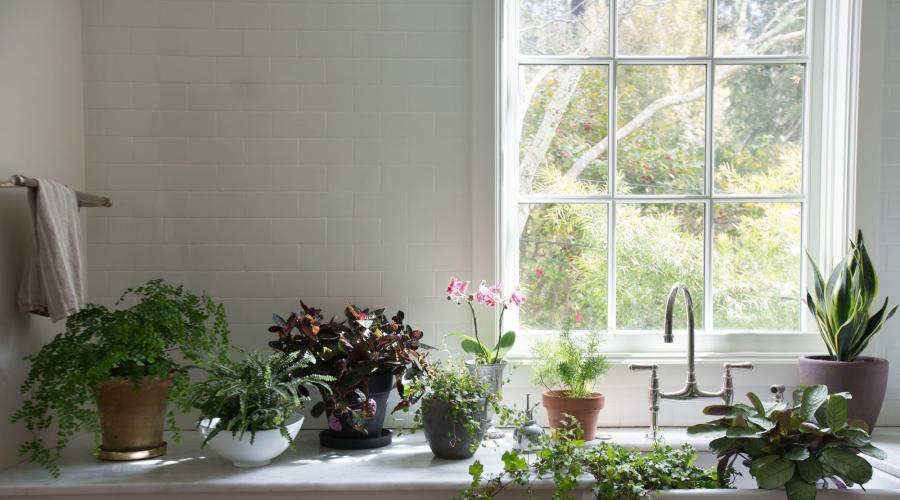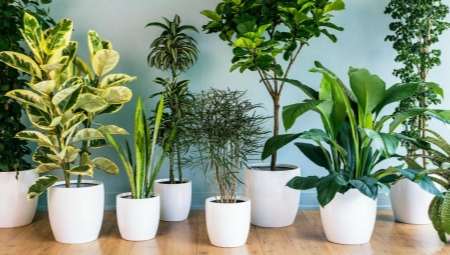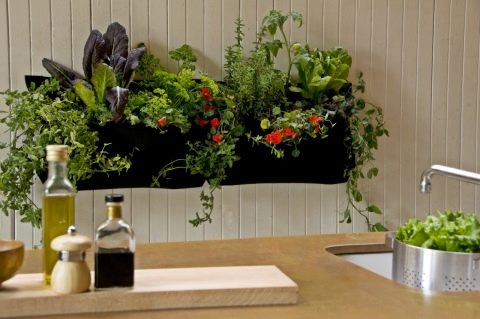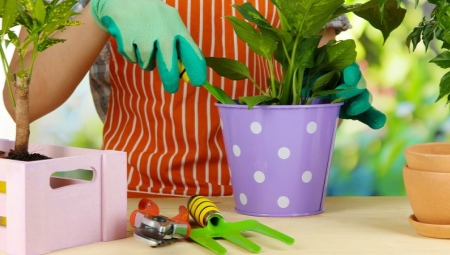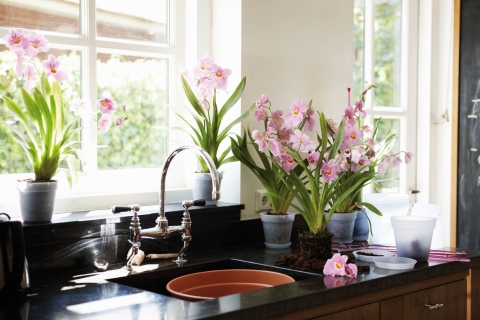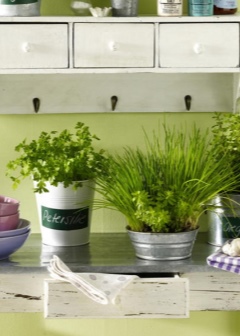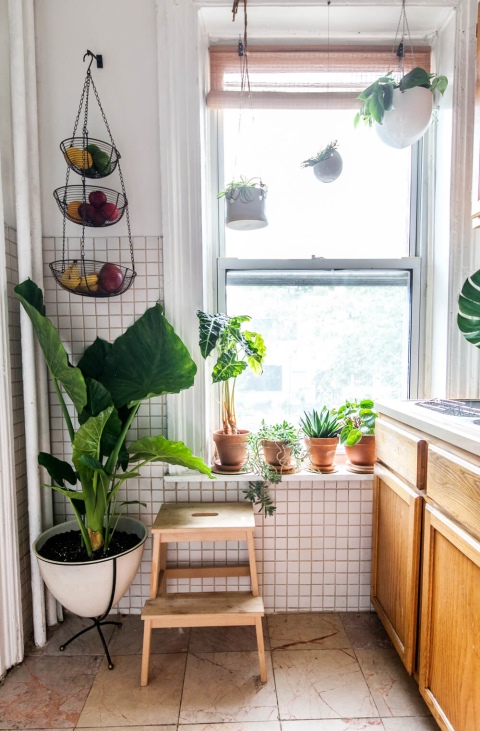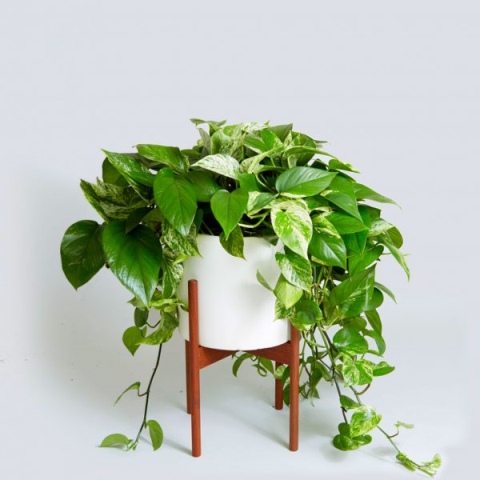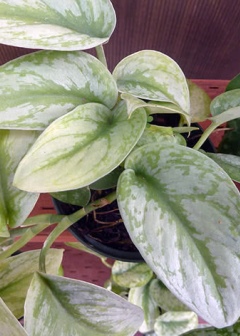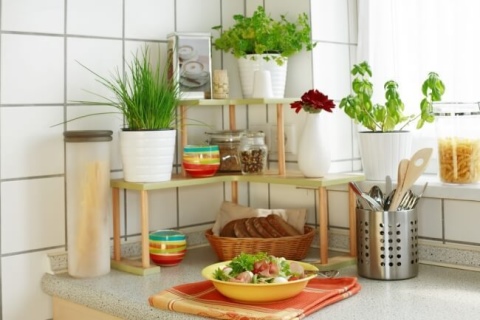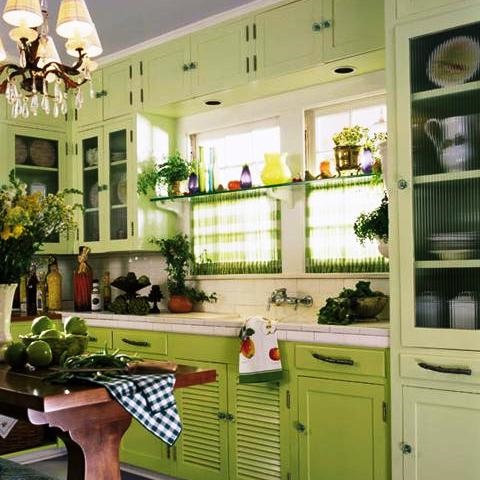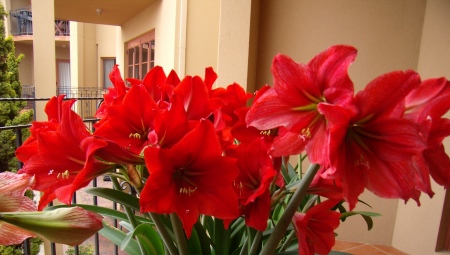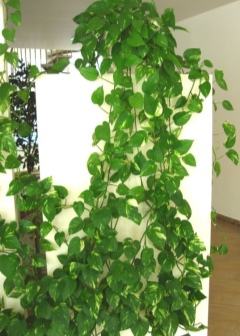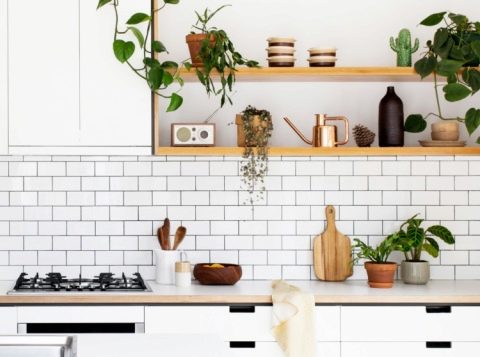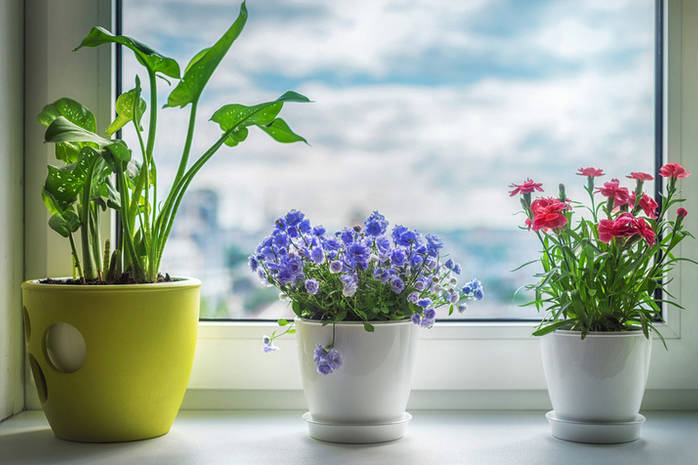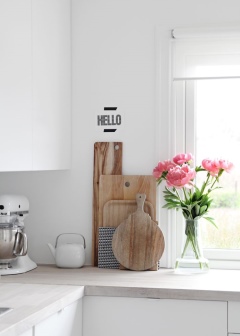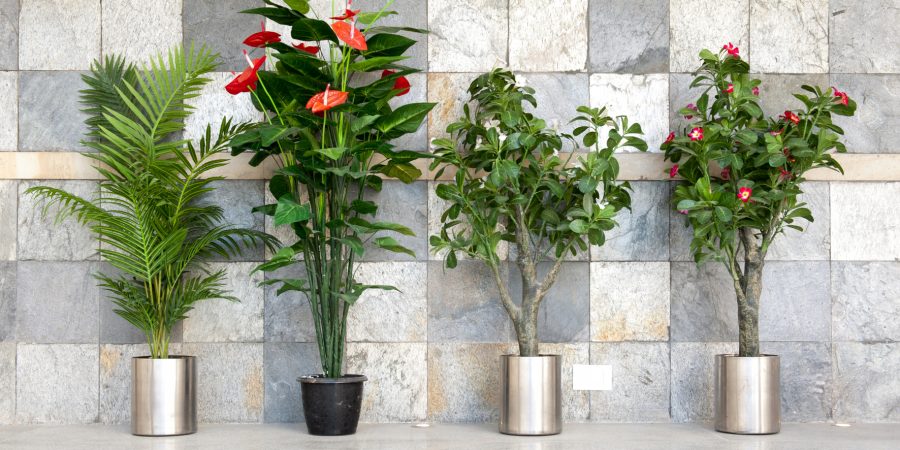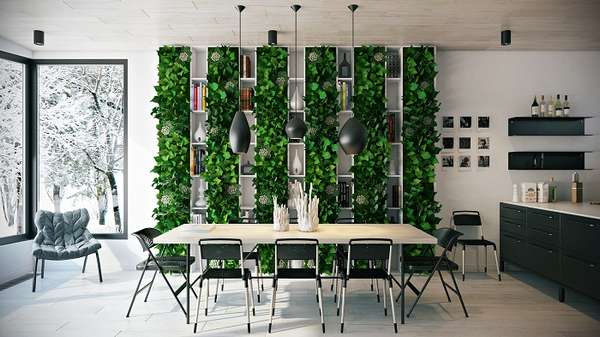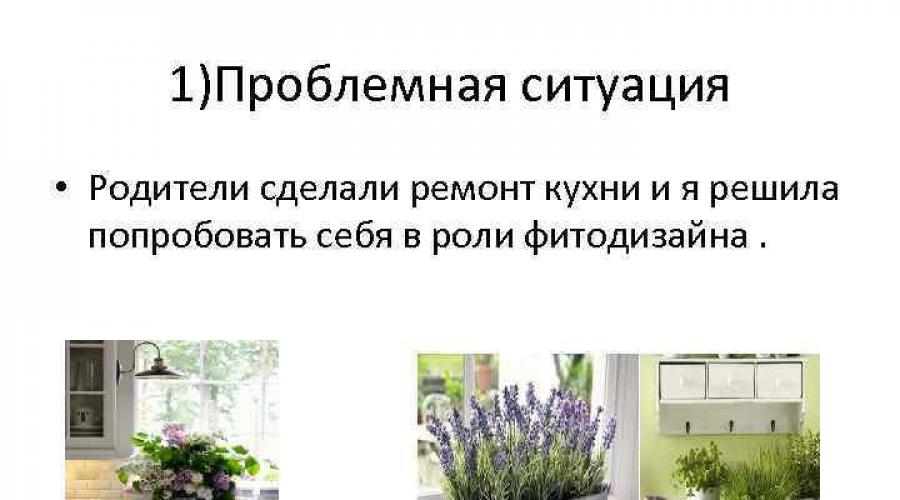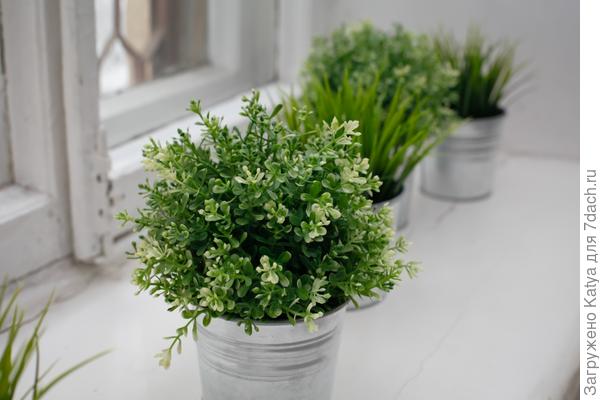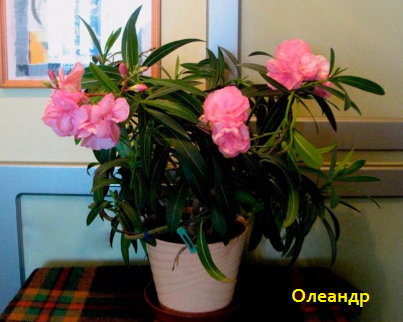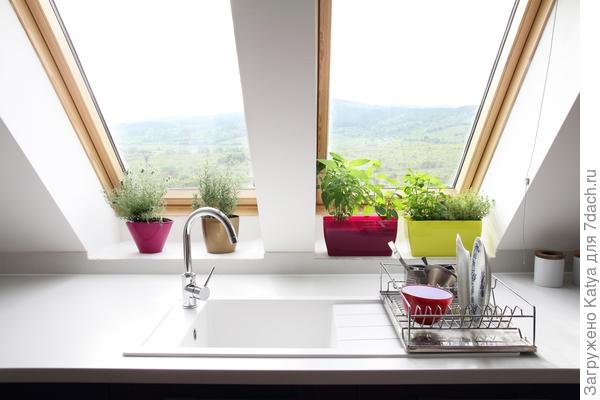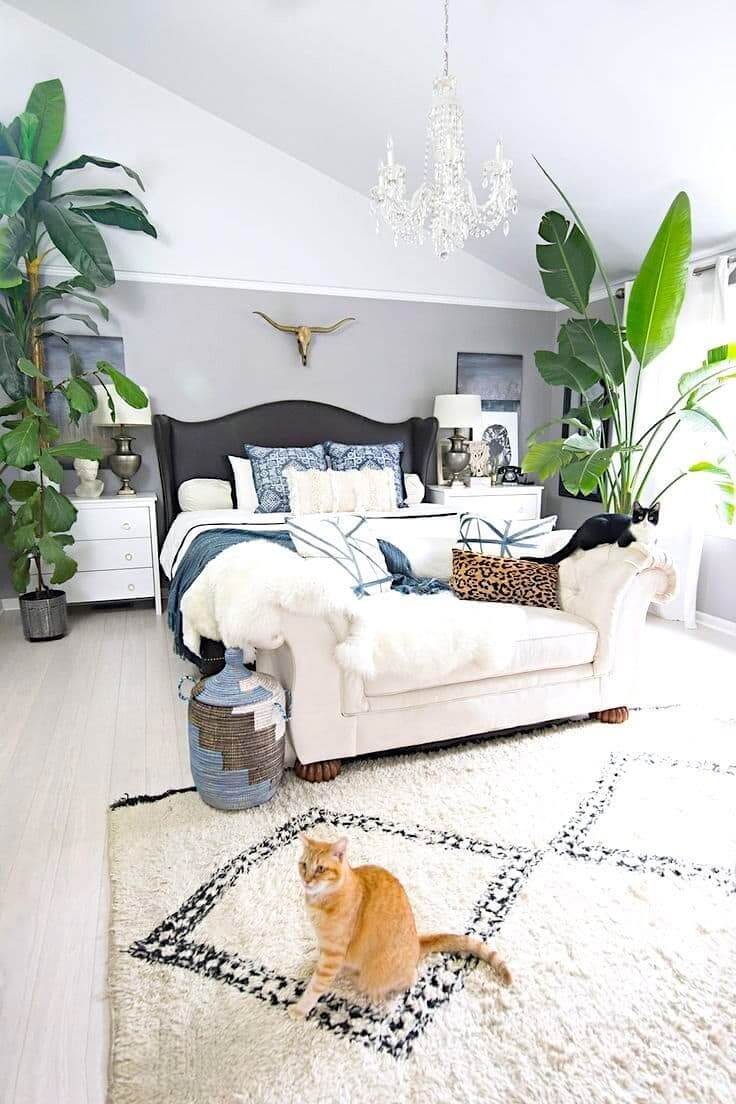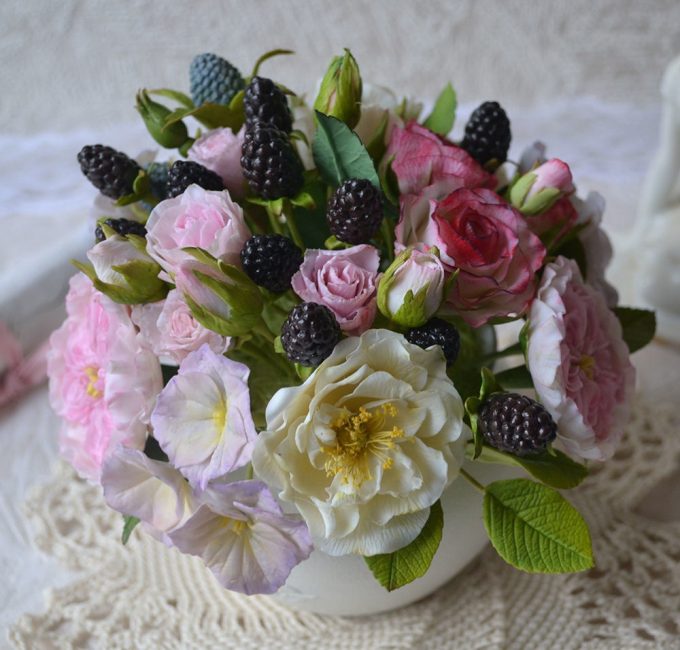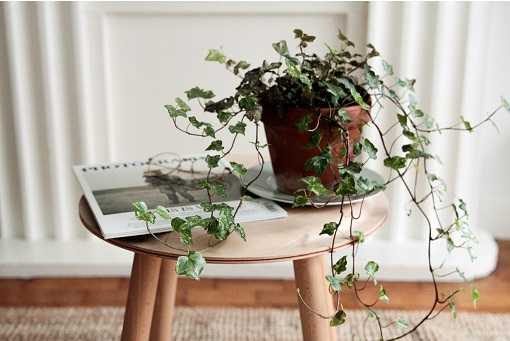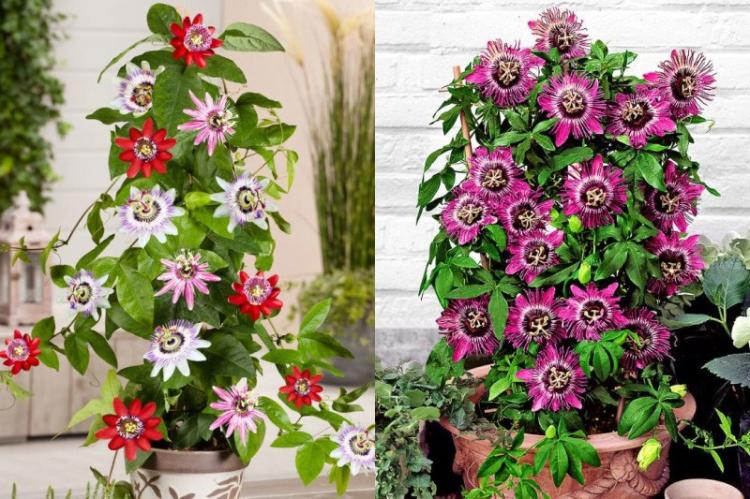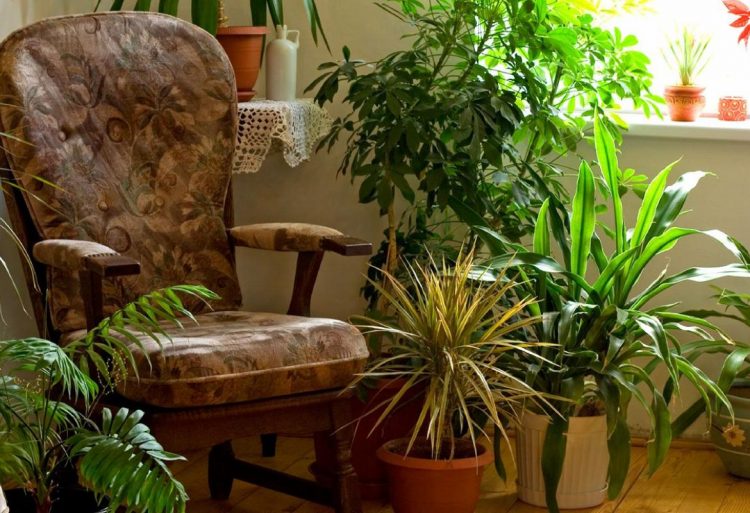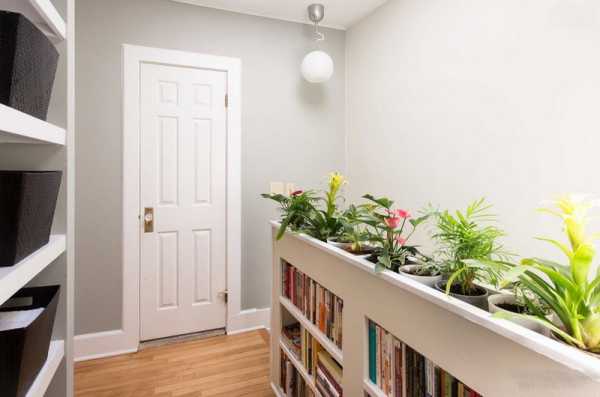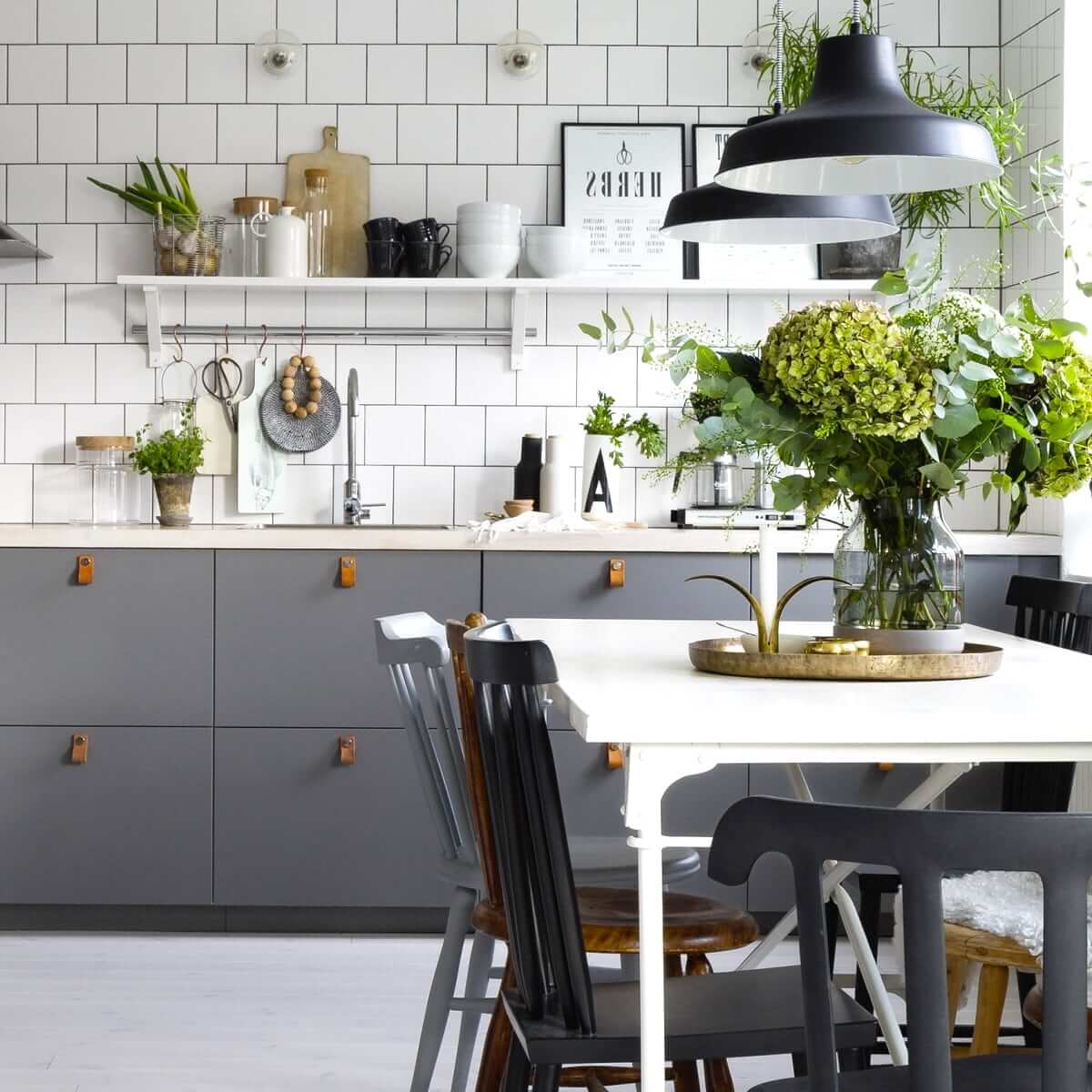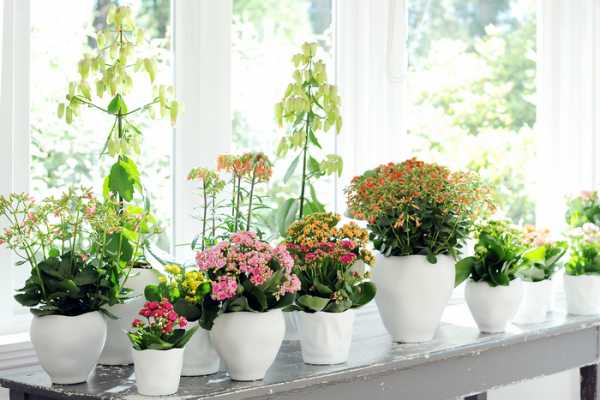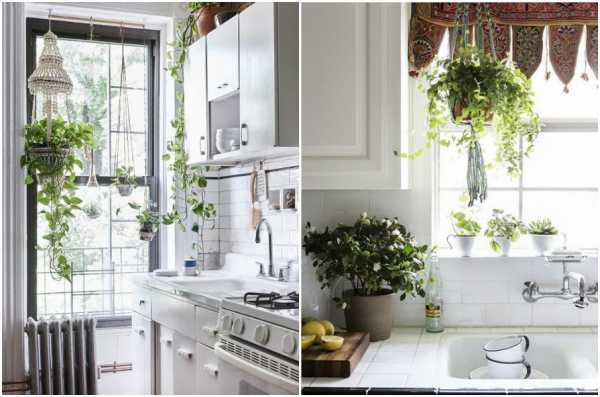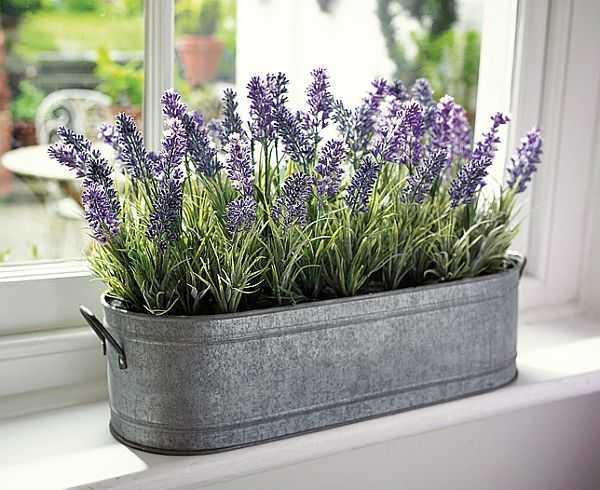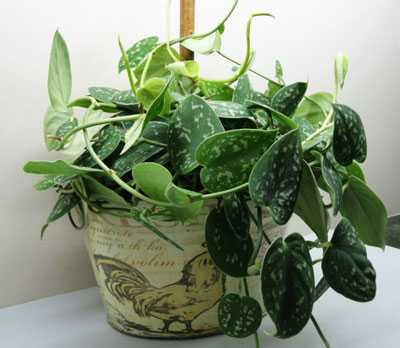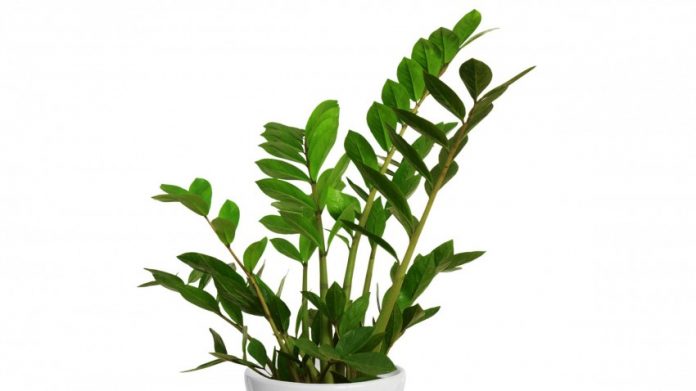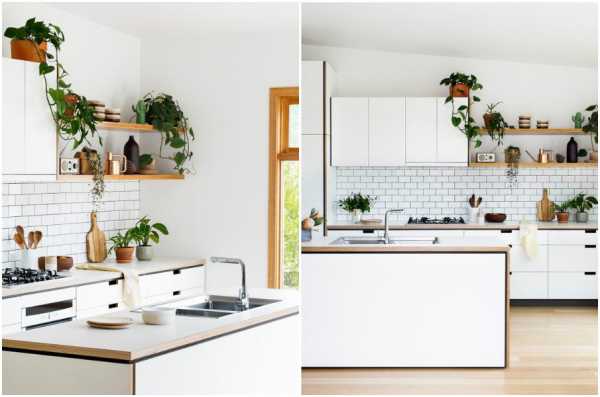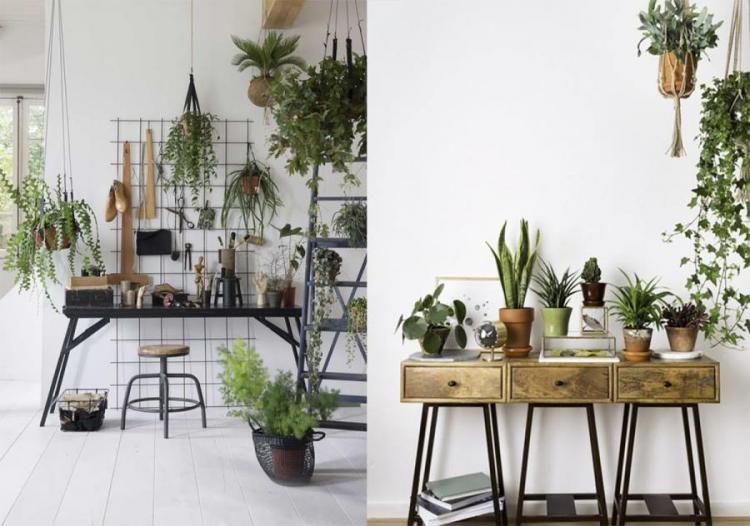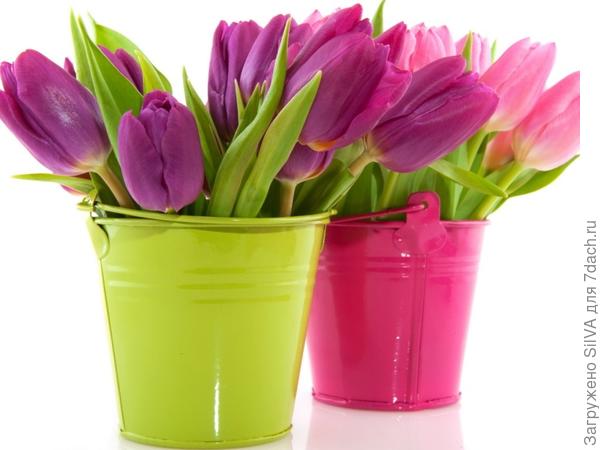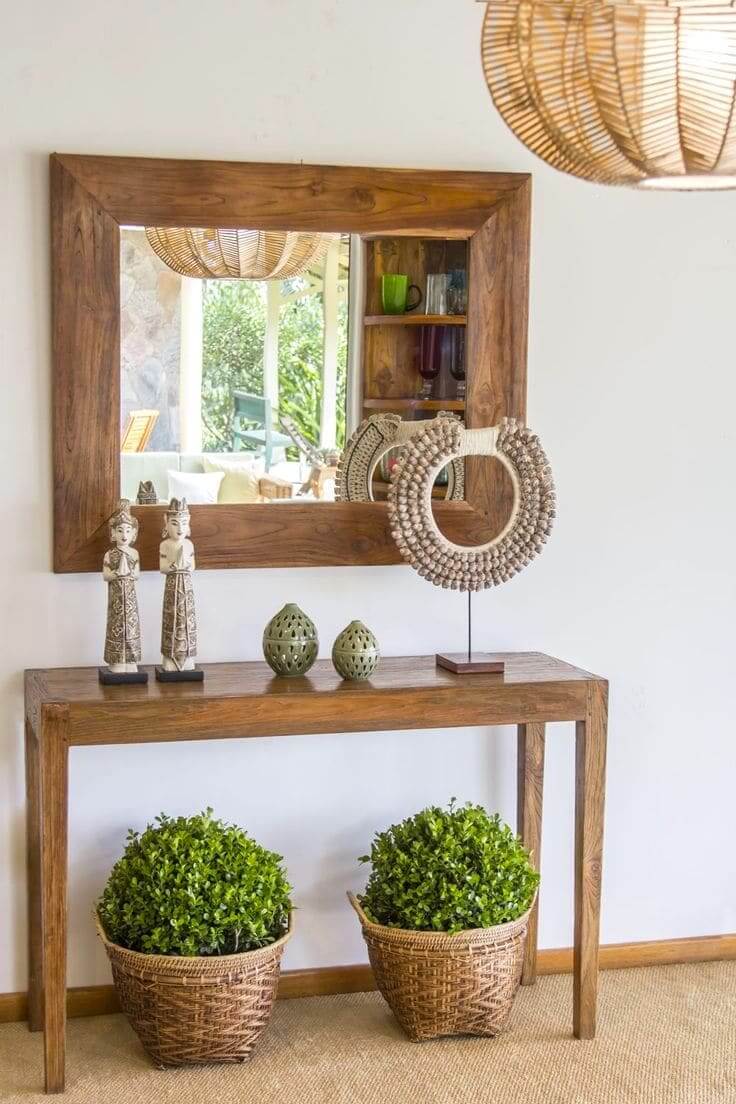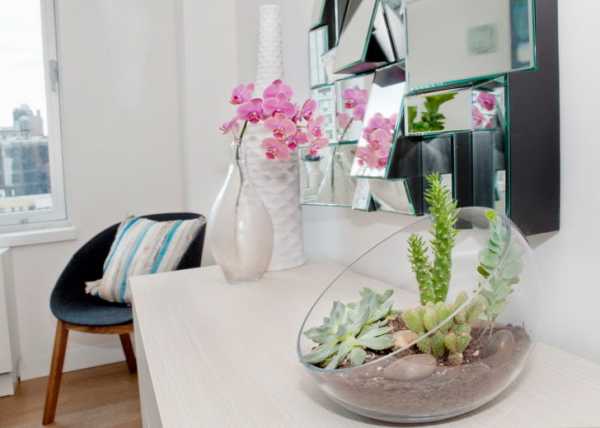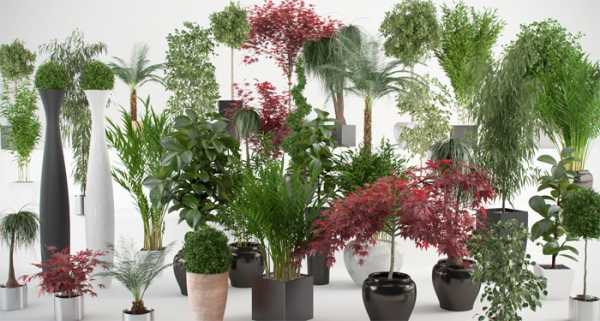10 ideal indoor plants for the kitchen (decorative leafy)
So, only drought-resistant ones that can withstand temperature extremes, do not require abundant spraying, greenhouse conditions and complex plant care are suitable for gardening a kitchen.
Here is a list of indoor plants that are great for keeping in the kitchen:

- Chlorophytums;
- Aglaonema;
- Epipremnums (Scindapsus golden);
- Sansevieria;
- Zamioculcas;
- Aspedistra;
- Cacti;
- Fat women (crassula);
- Philodendrons;
- Nolina (bokarnea).
Chlorophytum in this list is in the first place not only because of its unpretentiousness, but also its ability to cleanse and humidify the air well. So good that he is called an air orderly and is kept even in spaceships where it is impossible to ventilate the space. Therefore, in the presence of plastic kitchen furniture, for example, made of chipboard, and a gas stove, it is recommended to acquire them, and one flower for the kitchen will be enough. In addition, small and delicate white flowers grow in chlorophytum during the flowering period.

All indoor plants in the interior of the kitchen look harmonious and immediately make it more comfortable. Chlorophytum is no exception.
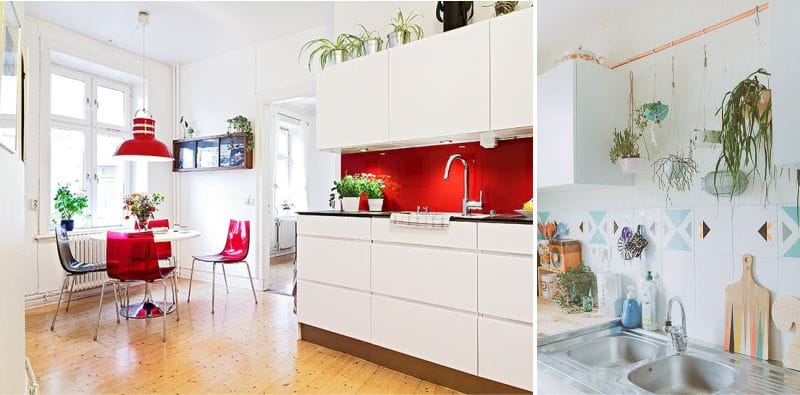
Place it on top of a headset, high on a shelf, or place it in a hanging planter anywhere but in the shade. Partial shade is acceptable, but remember that the closer to the light it grows, the brighter its leaves will be.
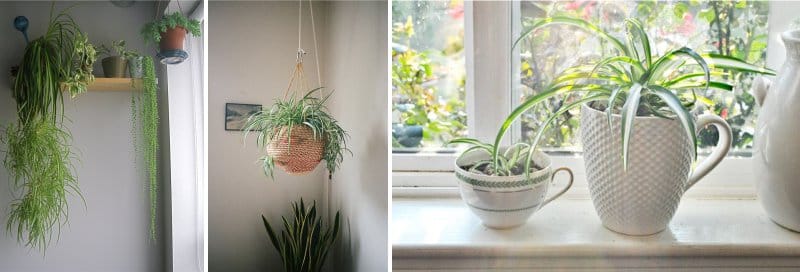
The next favorite for the kitchen is Aglaonema, once famous for her "role" as a friend of the protagonist of the movie "Leon". This evergreen herb, like chlorophytum, perfectly cleans the air, but it tolerates temperature changes worse and needs more air humidity.

Aglaonema with green leaves can be placed in the back of the kitchen, while plants with variegated leaves are best kept close to the window, but not in direct sunlight. The leaves need to be regularly wiped off dust, which is not so difficult, since they are relatively wide.
This is how this houseplant looks in a kitchen interior.
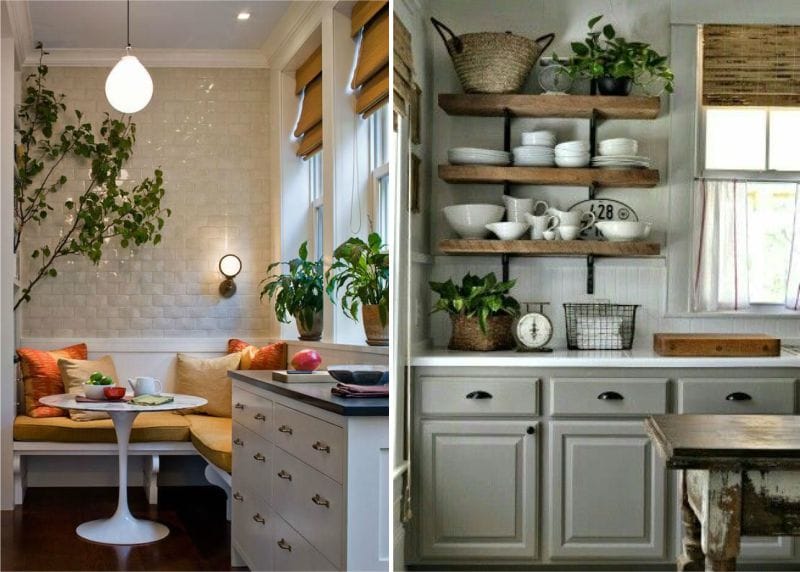
The next popular species is epipremnum (golden scindapsus). It is also classified as an air-purifying and unpretentious plant, which means it is suitable for the kitchen. Unlike the first two kitchen houseplants, the scindapsus is an evergreen tropical liana that grows up to 1.5 m in length.

It can be grown almost anywhere, as it is tolerant of temperature extremes and even artificial lighting, which, however, turns completely green. Where to put it? The best place is at the top of a kitchen unit, on a sideboard shelf, in a hanging planter, etc. Of course, long indoor plants in a Provence style kitchen interior look the most organic.
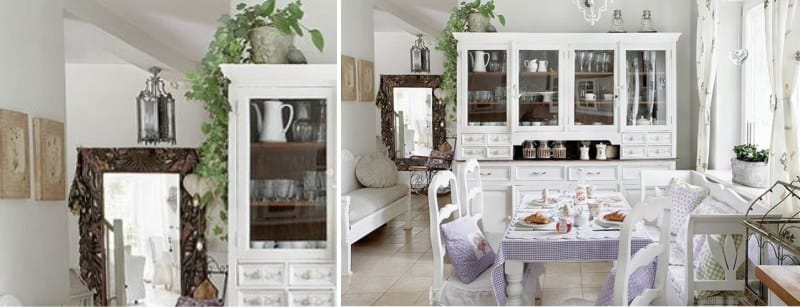
But in any other style, from classics to Scandinavian minimalism, epipremnum will be appropriate.
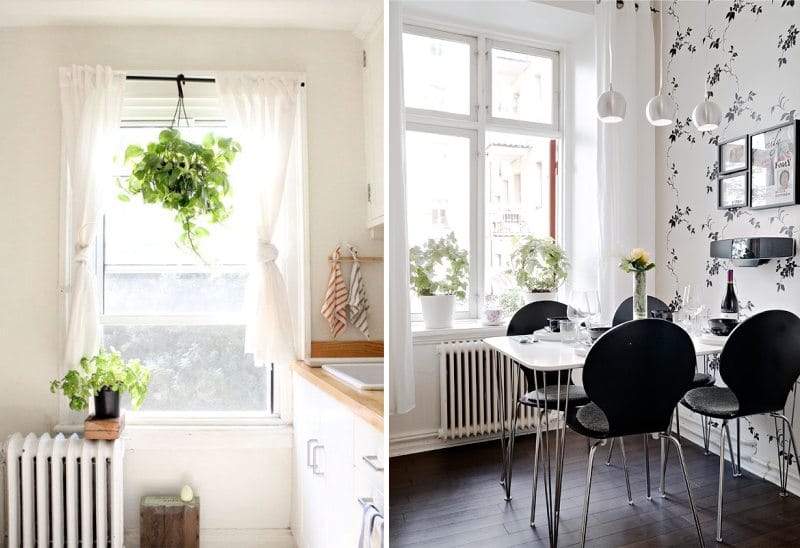
Now let's talk about the 4th participant in the list of the best plants for the kitchen - sansevieria, which is also known as "mother-in-law's tongue" or "pike tail".

Due to its bright color and the shape of the leaves, reminiscent of kelp or a flame of fire, the “pike tail” looks very impressive in the interior of a kitchen of any style, and with a large growth it can play the role of an accent. In all modern styles - Scandinavian, minimalism, hi-tech, modern and loft, sansevieria maintains restraint of lines and shapes, as can be seen in the photo below.
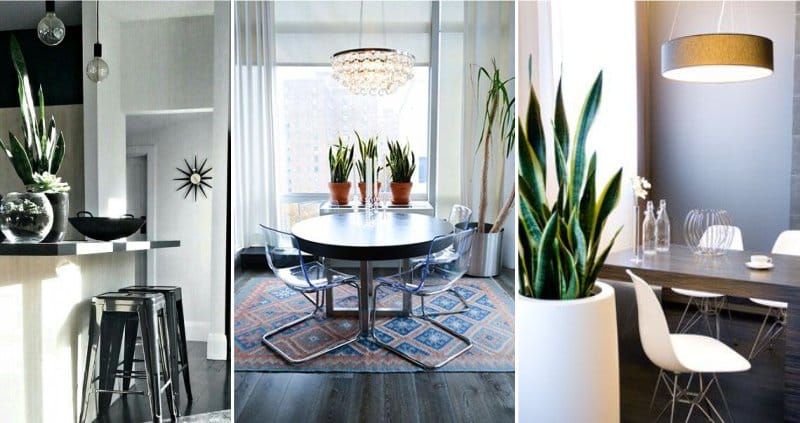
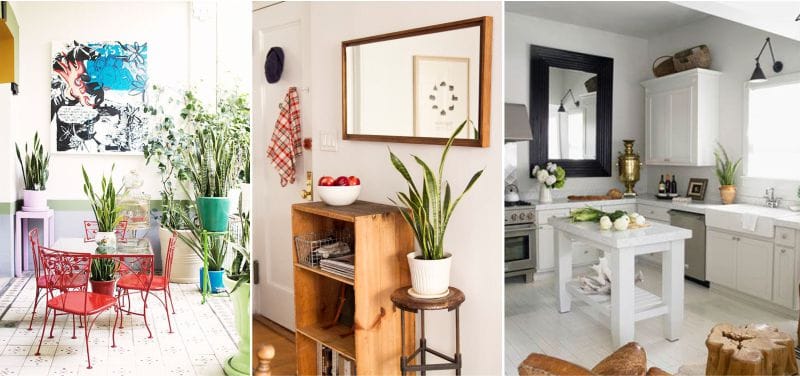
But it can also fit into the interior of the kitchen in a classic style.
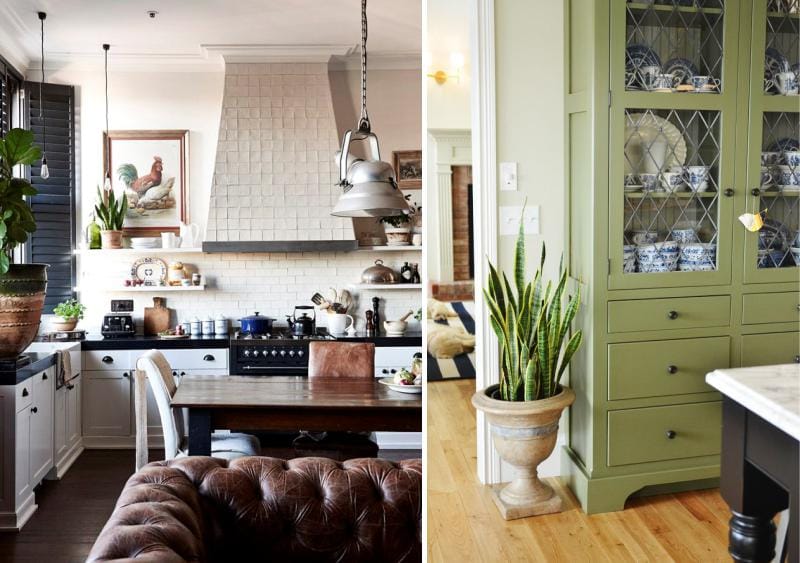
We have considered only the most popular plants, because it is impossible to tell about all 10 species from our list in one article. But zamioculcas, cacti, philodendrons and other specimens are no less interesting.Therefore, we recommend that you study the topic of "kitchen botany" in more detail in special books and video tutorials. In the meantime, we look at the plants and flowers in the interior of the kitchen in these photos (scroll to the right).
The best flowers for the kitchen
- Chlorophytum is an unpretentious plant that tolerates dry and humid air, insufficient and excessive watering. Not afraid of cold, heat, drafts. Has a beautiful decorative look. Considering that chlorophytum also perfectly moisturizes and purifies the air from harmful substances released during gas combustion, then it is an indispensable inhabitant of the kitchen;
- Kalanchoe is a picky plant with beautiful flowers. Its leaves can be easily removed from dust and grease with a damp cloth. Does not require special care. It is widely used in folk medicine as a wound healing and anti-inflammatory agent;
- Decorative pepper is an unpretentious shade-tolerant fruit plant. It will decorate the interior of the kitchen with its bright fruits. Can be placed both on the table and on the windowsill. Proper watering is important: decorative pepper does not like waterlogging and drought;
- Sansevieria or "mother-in-law's tongue" - has beautiful decorative leaves, grows quickly, and is unpretentious. Perfectly cleans the air from harmful substances emitted by floor coverings and furniture. Sanseria is shade-tolerant, so it can be placed in any part of the kitchen. Copes well with temperature extremes. Long glossy leaves are easy to dust off;
- Geranium is a flowering, unpretentious and useful flower. It releases substances that disinfect and purify the air. Maintenance is simple: regular watering, sufficient illumination, no spraying required. It pleases with flowering all year round. It has many flowering and smelling varieties;
- Ficus is a versatile plant with fleshy leaves. The rich green color and beautiful shape of the ficus tree will suit any kitchen interior. It perfectly tolerates high humidity and irregular watering;
- Epipremnum (scindapsus) is a spectacular tropical vine up to 1.5 m in length. Growing rapidly (about 1 meter per year), unpretentious. The only requirement is regular feeding, which is associated with rapid growth. It has the ability to purify the air. Temperature extremes are normal. Looks great in hanging pots or on shelves;
- The fat woman is an unpretentious plant, tolerates dry air and infrequent watering well. In low light, it can shed leaves. Therefore, the best place for a fat woman is a windowsill. From time to time it is necessary to wipe the leaves from dust;
- Orchid is the trendiest kitchen plant. Loves light and warmth, but without the bright rays of the sun. The best place is a window facing east or west. Requires additional lighting, especially in winter, and regular spraying with water at room temperature;
- Aglaonema is a beautiful decorative leafy representative of the Aroid family. Perfectly cleans the air from harmful substances emitted by furniture and floor coverings. High air humidity has a beneficial effect, but it does not tolerate temperature drops. Thanks to its wide leaves, it can be easily cleaned of dust.
Indifferent to conditions
All that can be said about this category of indoor plants is that they will fit equally well into the interior of any kitchen, and not only visually. They are resistant to both high and low temperatures, they do not need to create any conditions, they do not need special care, and that says it all.
Many plants are completely unpretentious and do not require special care. They can safely decorate the kitchen
Euphorbiaceae
Many of this family of plants belong to the already known succulents, which were discussed above, both stem and deciduous, but not everything can be attributed to such. Their diversity is simply amazing, in modern biology there are 15 separate genera of Euphorbia, which are not related to each other.These are giant trees, tenacious multi-meter lianas, and low-growing grasses. The only thing that brings the plants of the family closer is that in places of damage they release a thick, oily juice, similar to milk, and all without exception bloom.
These plants do not require constant maintenance. But pleasing to the eye with abundant flowering
Herbaceous
The most common type of plants, not only in the kitchen in flowerpots, but in general on the planet. Perhaps no one will ever be able to name the exact number of herbaceous plants, maybe this is their appeal. Their variety is so great that the listing itself would take hundreds of thousands of pages of text. For decorative planting, including kitchen pots, they are mostly used for perennials that do not require an annual transplant, although there are exceptions.
These plants very refresh the look of the kitchen and soothe after a hard day.
Examples in the interior
The original design of the pots allows you to place kitchen plants in an unusual place. For example, if you plant decorative bushes in metal buckets, then the latter can be attached to special hooks attached to the bottom of the metal shelf. A set of beautiful mugs will turn out to be a very organic neighbor for them. It is worth mentioning that a home garden is often placed in such containers - as an option, mint and basil are grown there.
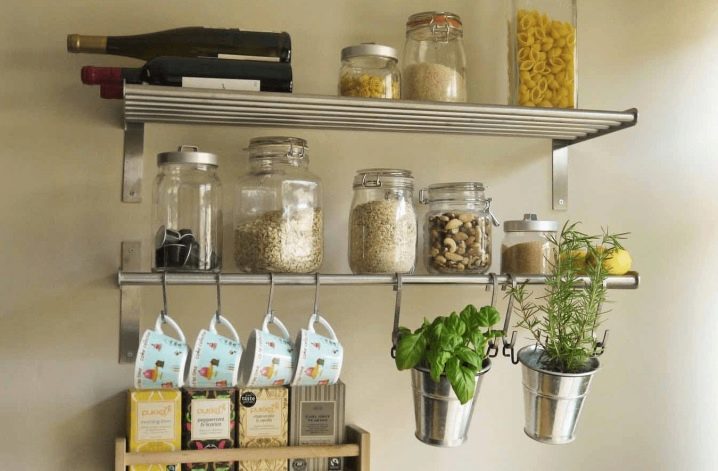
You can decorate any kitchen if you plant the plants in original pots and pots. For example, it can be figurines of little men with "live" green hair, large colorful mugs with saucers or stylish wooden boxes.
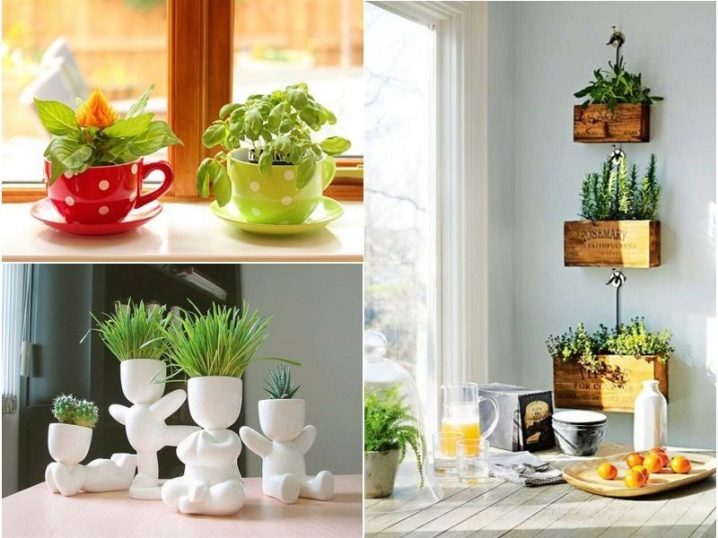
The classic design is the presence of a pair of pots on the windowsills, a hanging pots by the window and a beautiful bouquet in the center of the table.
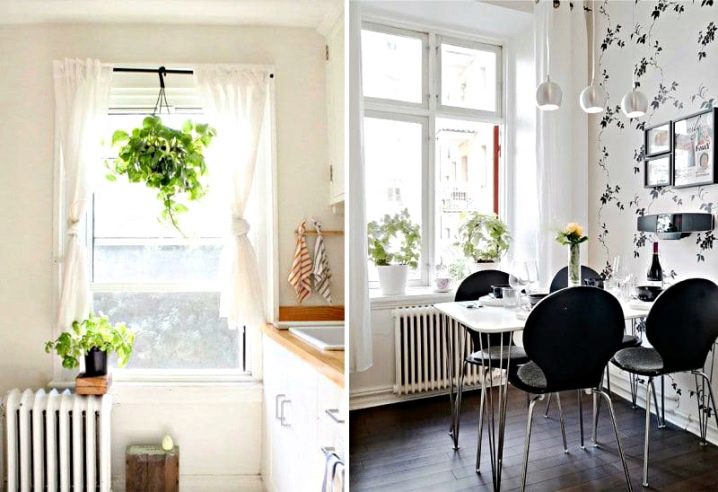
For information on which indoor flowers are best suited for the kitchen, see the video below.
Blooming shade-loving plants
In the shade, some indoor plants are not only covered with lush green foliage, but also bloom beautifully. Therefore, the northern windows can be decorated with flowering vegetation.
Spathiphyllum
He gained popularity because of the second romantic name - "female happiness". Many lovers of home greenhouses are attracted to it by the lush dark green foliage and many white, similar to small calla lilies or sails, flowers. Spathiphyllum is sensitive to watering, it should be moderate, preferably in a tray. Periodically, the leaves need to be sprayed, and once a month the flower needs a shower. "Women's happiness" is well suited as a lovely gift for a woman, for example, on her birthday or on March 8th.

Saintpaulia
Variety of violets, fleshy, slightly fleecy, dark green leaves and many delicate lilac flowers. Feels good on the north windows. It is better to water with settled water at room temperature in a pan. Doesn't like overflow. Bloom for a long time, faded sockets are immediately replaced with new ones. New varieties are constantly being developed by amateurs, with a wide variety of flower shapes. In many cities, enthusiasts and amateurs often organize exhibitions and sales of dozens of varieties of violets, including Saintpaulia.
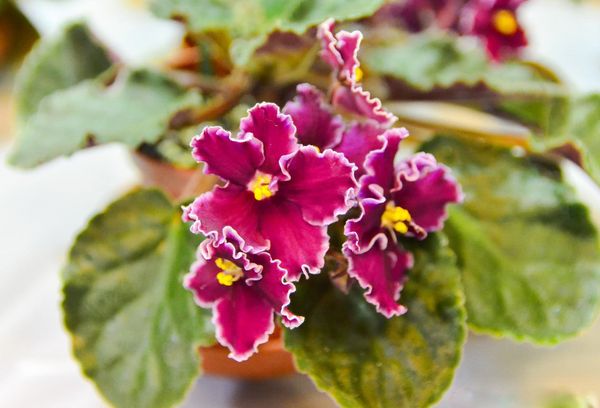
Begonia
Another shade-loving houseplant with beautiful bright flowers, familiar and loved by many. Quite unpretentious, it needs moderate watering. Spraying of leaves is not required. Sensitive to air humidity. It has decorative flowers and leaves. It blooms in both winter and summer. There are about 2000 varieties of begonias bred in the world.
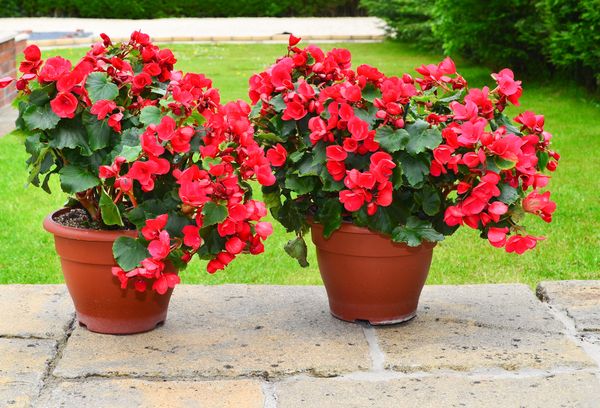
Miltonia
The flowers of this representative of orchids resemble surprised, wide-open eyes. Hence the second name - "pansies". It develops well in the shade, does not tolerate drafts, likes good watering. The fact that the plant is comfortable is evidenced by the pinkish color of the leaf and abundant flowering.

Strepkocarpus
Just a godsend for novice florists. Unpretentious, blooms for almost six months. Does not require special care, except for watering. Any part of the streptocarpus is suitable for reproduction.Shade-loving, the flowers are large, in the form of bright bells.
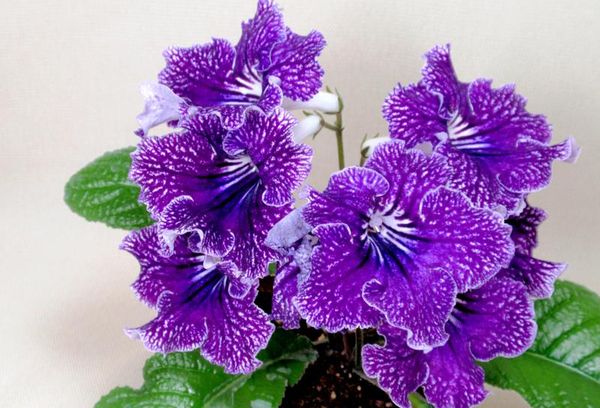
Vriezia
This beauty with a bright large flower in the form of a spike, despite the capriciousness and exactingness of self-care, is known and appreciated by many flower growers. It blooms for a long time, requires watering with warm water, very abundant in summer, spraying the leaves and wiping them with a sponge. There are about 250 species. Loves humid air, does not tolerate drafts. Prefers partial shade.
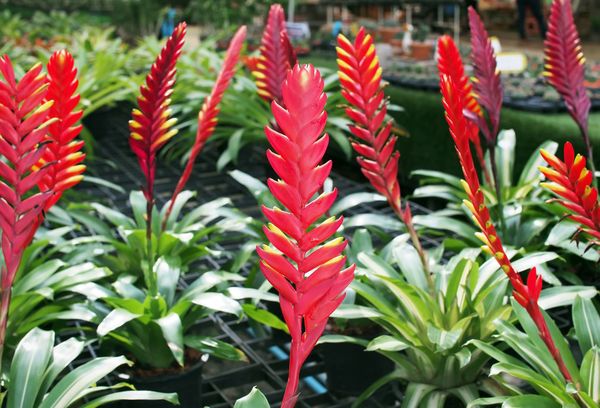
For a sunny kitchen
If your kitchen is bathed in bright sunlight every day, look out for succulents and cacti. All of them will not be offended at all, and even more so they will not disappear if you forget to water them.
Succulents
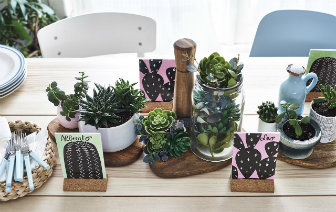
These plants have completely different origins, but they are all equally drought tolerant. They will inform you about the overflow - their fleshy leaves will begin to thin or wrinkle.
Soil: for succulents and cacti. Watering: in summer, succulents are watered no more than 1 time in 1-2 weeks (or even less often), and even less often in winter. Temperature: 7-35 degrees.
They are not afraid of drafts, they are hypoallergenic, most of them are not poisonous and are unlikely to interest pets - although anything can happen. It is not necessary to spray succulents, but you can periodically wash it from the shower with non-hot water, while avoiding waterlogging of the soil.
We will give just a couple of examples, but these characteristics apply to other succulents as well. And, believe me, there are a lot of them.
Aloe
There are more than 30 species of agave, differing in shape and color - for example, as in the photo. The older the aloe, the less often it needs to be watered.
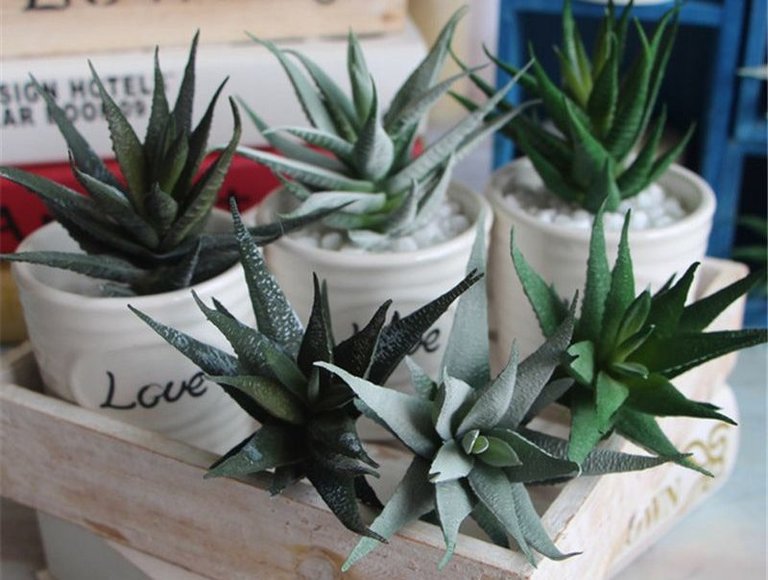
It is very easy to care for it: plant it in special soil for succulents and cacti, but it will just as well grow in the soil dug up in a yard or park.
Aloe blooms rarely. Therefore, you can choose something else for the kitchen.
Kolanchoe
Flowering species - Blossfeld's Kolanchoe, Mangus and Kalandiv should be removed or protected from the sun after 3 pm. Less demanding in this case is the viviparous kolanchoe - tubular, pinnate, or Degremona.
The dissected-leaved kolanchoe or "deer antlers" is also distinguished by an extraordinary look. Even on dimly lit windows, it will delight you with bright yellow flowers.
Cactus
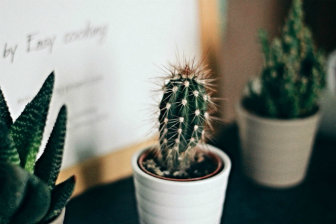
Perhaps their only drawback can be called thorns, sometimes poisonous. And to make the cactus bloom, you need to try to recreate their natural regime.
Soil: the ideal soil composition is the soil from the park, fertilized with a small amount of coal, brick chips and sand, or a special soil mixture for cacti. Watering: a cactus will more easily tolerate a lack of moisture than an excess of moisture. In winter, watering is minimized. Temperature: positive.
Austrocylindroopuntia
This cactus is ... quite edible. He loves daily watering in the evening and will hint to you if there is not enough water, he will shrink. All types of prickly pear should be gradually accustomed to the change of seasons and gradually moved away from the cold window, since they do not tolerate a sharp change in the light regime. True, they do not die from this.
Cereus
This is both a real giant and a long-liver of the plant world. Unpretentious, only he does not like stale air and is sick from overflow. It blooms beautifully and profusely, mainly at night.
Epiphyllum
The cactus family is not limited to round or long spiny hedgehogs. But beauty requires sacrifice: the flower must be periodically sprayed, bathed and transplanted annually.
Geranium
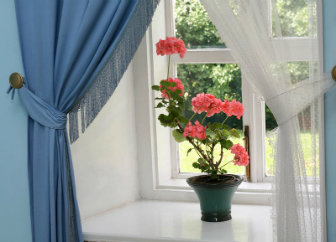
A family of scented plants that seem to bloom every now and then.
Soil: suitable from the yard. Watering: 1-2 times a week, you can alternate with spraying. Temperature: positive.
Minus: Despite the fact that many plants of this family are medicinal, they can cause severe allergies. They smell specific.
Some plant species prefer bright, diffused light, such as through curtains.
Ficus benjamin
A bush that eventually turns into a tree.
Soil: for ficuses. Watering: intensive in summer, moderate in winter.The lack of moisture will be reported by dropping the leaves. Temperature: 15-25 degrees.
Loves fresh air and regular spraying.
Crassula
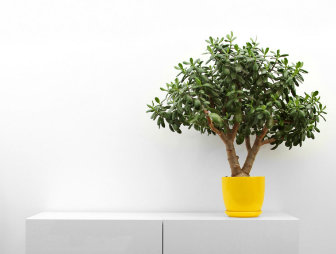
She is a money tree, a fat woman and a tree of happiness.
Soil: any. Watering: as the soil dries up - 1-2 times a week, in winter - less often.
Sometimes it is necessary to wipe or wash. Weak root system, therefore good weighted drainage is needed.
Temperature: 6 to 25 degrees.
Delicious beauty
How do you look at growing edible crops? Plant parsley, onions, dill, arugula, basil, or rosemary in your kitchen and have healthy spices close at hand. An interesting solution would be beans - they bloom beautifully and curl like a liana.
Main determinants
When choosing plants, you need to take into account the climatic characteristics of the room. The kitchen is characterized by dry hot air and temperature drops, which already makes its own limitations.
In addition, it is worth considering:
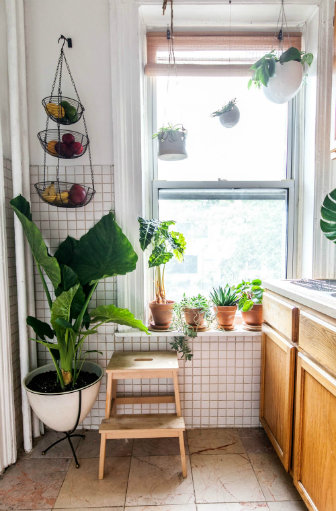
1. The amount and direction of sunlight. Some plants like direct sunlight (light-loving). There are those that prefer to grow in the shade or in diffused lighting (shade-loving and shade-tolerant). And some are equally good both in the sun and in the shade, just from the sun their colors usually become brighter. Dense or light-diffusing curtains and phyto-lamps will help to correct the existing situation.
2. The minimum temperature in the room
When choosing indoor flowers for a summer or cold kitchen, pay attention to this indicator. Especially if it falls below 15 degrees in your case.
3
Cold drafts unacceptable for some colors.
4. Features of the plant life cycle. Some species tend to rest in winter or even a whole year. And this may mean that for a certain period the plant may not show any signs of life. And instead of lush vegetation, there will simply be a pot of earth on your window. So, for example, zantedeschia or oxalis behave. It turns out that it is a pity to throw it out, and it seems alive, but somehow empty
Therefore, it is important that the life cycle of the flower you like suits you.
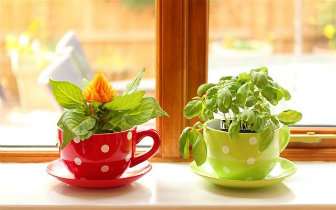
5. Difficulties in leaving. The need for regular spraying, special fertilizers, frequent transplants, soil changes, planting - all this taken together makes flower care more difficult.
6. The presence of pets and children. Lovers of cats and dogs have already understood what this is about. “But what have children got to do with it?” You ask. The fact is that many plants useful for the kitchen are poisonous (for example, aroids), and it is better not to taste them.
7. Propensity to allergies. Are you allergic? Then, you see, it is better not to aggravate the situation. When a plant unknown to you has a pungent smell, opt for another. Moreover, if there is poor ventilation in the kitchen or the windows are always closed.
Do you think this is all too complicated? That is why we have selected for you a list of the least fastidious indoor plants that will decorate the kitchen interior all year round.
Where to place?
You need to choose the right location for the flowers in the kitchen and always keep the plant pots in their places. Some types of flowering plants can get sick even from turning the pot. Greening the kitchen is best done in spring, it is at this time that most potted plants need replanting and take root most easily. It can be rearranged only in case of emergency: illness or deterioration in the appearance of the flower. A universal solution is to place flowers on a free wall in a planter at a convenient level for watering away from the stove and sink.
Curly specimens are best placed at a distance of 50–80 cm from the ceiling, since heat accumulates at the top and can harm the plants. If the kitchen is on the sunny side, it is not recommended to put flowers on the windowsill, even the most heat-loving flowers in pots can die from exposure to direct sunlight.
The dimensions of the room should also be taken into account: large plants, for example, a decorative palm tree or rapidly growing ones, such as a birch tree, will be out of place in a small kitchen, and small ones (violets) will get lost in a spacious room or on a wide window sill. For a small kitchen, decorative peppers, a coffee tree are suitable, and for a large kitchen, orange and lemon trees. You can plant a small lemon or orange tree in a beautiful tub, but floor-standing options are not suitable for a standard kitchen. They will only look good in the dining area of the spacious kitchen area.
Vertical gardening is also very popular today.
- Fitostena is a vertical structure from floor to ceiling filled with plants. It can be attached to the wall or act as a partition in the room. Tradescantia and peperomia are best suited for this.
- Phyto picture. It may look like a phytowall fragment, framed on a regular wall. Its size varies at the discretion of the owners. Plants can be used in the same way as in the preparation of phytowalls, and the composition is made from stabilized moss of different shades.
This method of planting plants allows you to significantly save space by placing flowers on racks, it is used when zoning a room. The vertical arrangement of plants requires the installation of a solid frame, since one shelf of the rack, about 1 m wide, can accommodate up to 10 plants. The main load on the structure is provided by the earth and drainage.
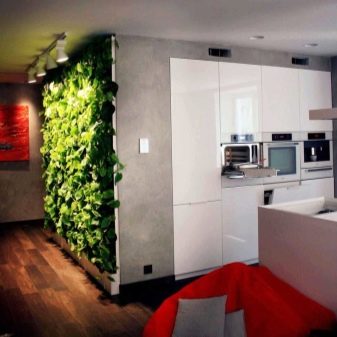
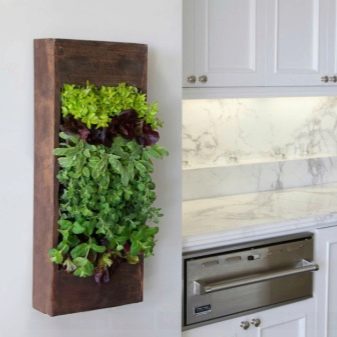
Where to put the plants
Where to arrange flowers in the kitchen? If there is a wide window sill, then the apartment owners do not have any questions - a real blooming garden is being set up here. But what if the apartment cannot boast of any intelligible window sills?
Then there are several accommodation options:
- pots with flowers can be hung on the window by hanging them under the curtains - this way you can create a very original greenhouse and decorate the window;
- flower pots are placed on hinged shelves along the walls of the kitchen;
- flower pots are placed in special attachments that are attached to the walls;
- the pots are placed on the cabinet.
Large plants in tubs are appropriate only in large kitchens. In small rooms, floor placement of plants is impossible.
The windowsill is one of the best places to place indoor plants.
It is good to hang climbing plants in pots on the walls and put them in lashes around the perimeter of the kitchen or window. Tradescantia and various ivies will look very beautiful.
The main thing to remember is that you should not place plants where drops of soapy water can get on them or where there is direct heat from the stove. The sink and stove are places where there is no place for plants. The only exception is tradescantia. It is so unpretentious that only it can be placed even above the stove itself. Little is inferior to her asparagus, which also withstands high temperatures.
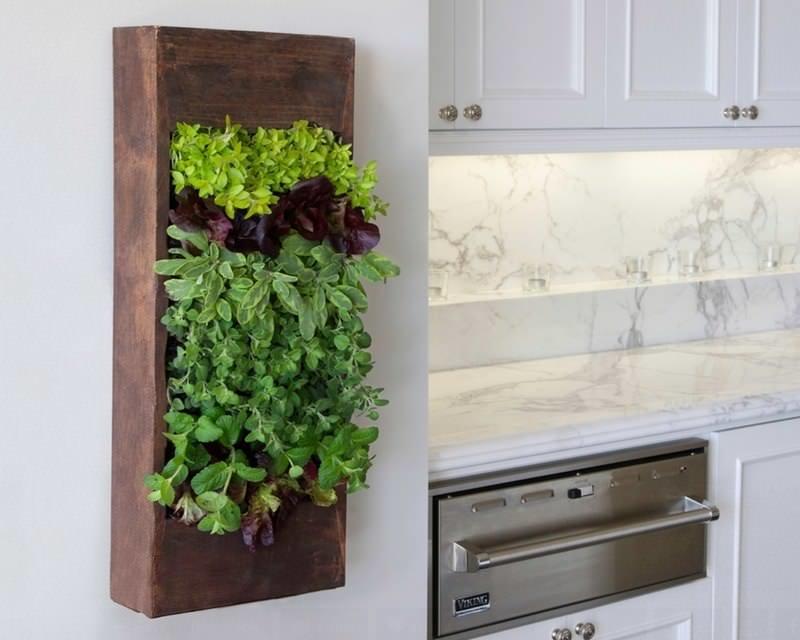 Flower wall fixture needs a drainage system
Flower wall fixture needs a drainage system
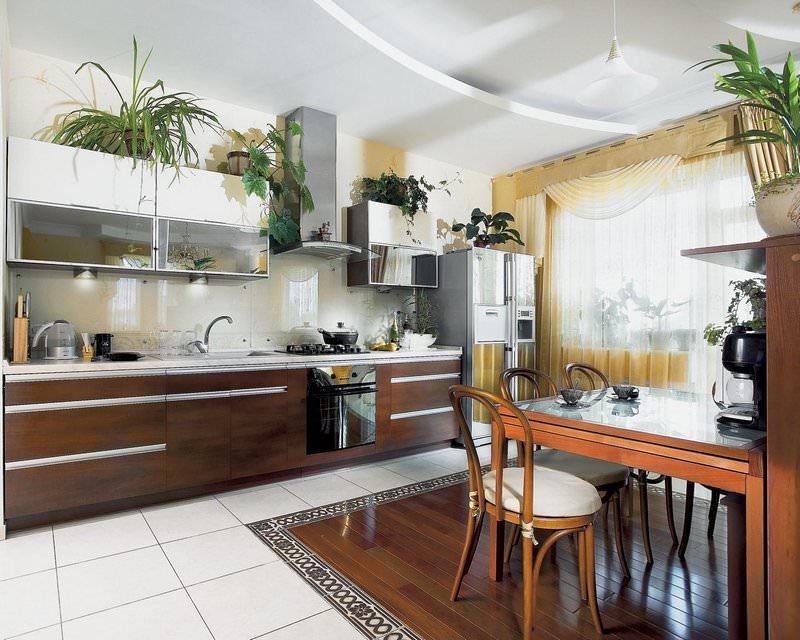 Houseplants can be placed on the upper modules of the kitchen unit
Houseplants can be placed on the upper modules of the kitchen unit
And one more condition: plants should decorate the kitchen, but should not interfere with moving and working around it. The pots should stand and hang in a way that makes opening the cupboards comfortable.
On the windowsill, they should not block the light from the window. Therefore, you should not choose tall specimens of the milkweed type for the kitchen, although it is beautiful and unpretentious. It is better to choose small and medium plants.
Choosing indoor flowers for the kitchen: what is right and what is not
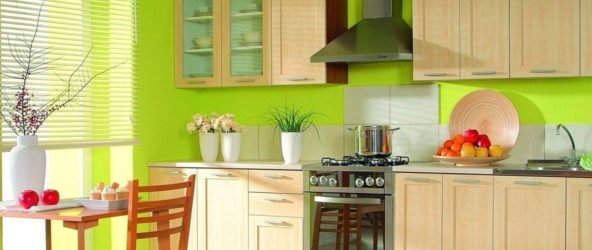
Almost every woman spends a lot of time in the kitchen, and therefore the desire to make this room more comfortable and cozy is quite natural. For this purpose, we sometimes buy a lot of beautiful dishes and furniture, which costs a pretty penny, in fact, everything is much simpler, to make the territory of the kitchen area more comfortable, you just need to get fresh flowers.
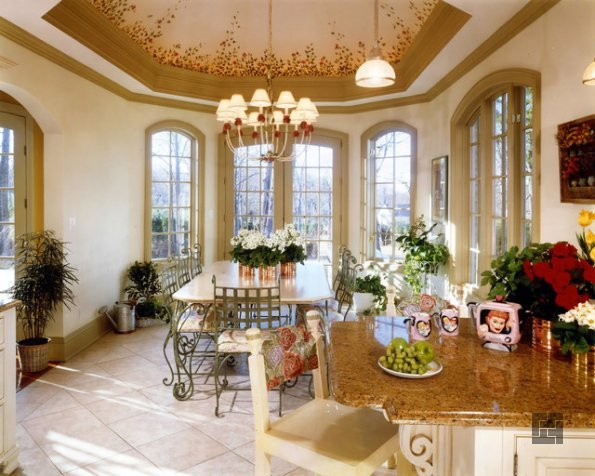
Many are afraid to plant fresh flowers in the kitchen, in a fasting place where the temperature and humidity are constantly changing, but this is completely in vain. If you choose the right plants according to the type of conditions in which they should be kept, then it is quite possible to breed a beautiful green corner in the kitchen.
A little feng shui
Many of us prefer to build furniture, flowers, and indeed the floor of life according to the ancient philosophy of Feng Shui. And if you are one of them, then the following information is for you.
North side
If the kitchen is located on the north side, then we select plants with orange or red flowering. Bright flowers, for example - rhododendron, "dilute" the northern cold of life. To protect the house from the "cold" we also place here pointed flowers like dracaena.

East side
If the kitchen is on the east side, then it is impossible to place holly flowers on it. To increase well-being in the house, we will put a money tree here, here it belongs. The rounded, strong leaves of this plant are easy to clean, and the flower itself is hardy enough for the kitchen.
Indoor flowers ennoble even the most trivial interior. A green corner in the kitchen will not only make it more comfortable and lively, but will add oxygen and health to you. Some types of houseplants, such as geraniums, even kill a variety of bacteria. Be sure to get flowers for the forge and do not be confused by the heat, fumes and steam, choose the right plants, take care of them on time, and then they will delight your eye every day.


